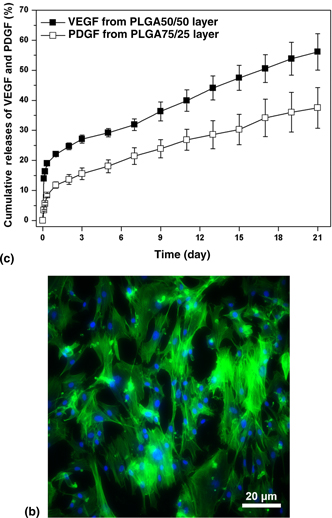Crossref Citations
This article has been cited by the following publications. This list is generated based on data provided by
Crossref.
Li, Junzhi
Sun, Haoran
and
Wang, Min
2020.
Phase Inversion-Based Technique for Fabricating Bijels and Bijels-Derived Structures with Tunable Microstructures.
Langmuir,
Vol. 36,
Issue. 48,
p.
14644.
Lai, Jiahui
Li, Junzhi
and
Wang, Min
2020.
3D Printed porous tissue engineering scaffolds with the self-folding ability and controlled release of growth factor.
MRS Communications,
Vol. 10,
Issue. 4,
p.
579.
Chee, B.S.
de Lima, G.G.
de Lima, T.A.M.
Seba, V.
Lemarquis, C.
Pereira, B.L.
Bandeira, M.
Cao, Z.
and
Nugent, M.
2021.
Effect of thermal annealing on a bilayer polyvinyl alcohol/polyacrylic acid electrospun hydrogel nanofibres loaded with doxorubicin and clarithromycin for a synergism effect against osteosarcoma cells.
Materials Today Chemistry,
Vol. 22,
Issue. ,
p.
100549.
Shen, Hong
and
Hu, Xixue
2021.
Growth factor loading on aliphatic polyester scaffolds.
RSC Advances,
Vol. 11,
Issue. 12,
p.
6735.
Zhou, Yu
and
Wang, Min
2021.
Electrospun Polymers and Composites.
p.
45.
Zhao, Qilong
and
Wang, Min
2021.
Electrospinning and Electrospraying with Cells for Applications in Biomanufacturing.
Nano LIFE,
Vol. 11,
Issue. 04,
Rajput, Monika
Tyeb, Suhela
and
Chatterjee, Kaushik
2022.
Electrospun Polymeric Nanofibers.
Vol. 291,
Issue. ,
p.
37.
Zhou, Yu
Zhao, Qilong
and
Wang, Min
2023.
Biomanufacturing of biomimetic three-dimensional nanofibrous multicellular constructs for tissue regeneration.
Colloids and Surfaces B: Biointerfaces,
Vol. 223,
Issue. ,
p.
113189.
Zdraveva, Emilija
Dolenec, Tamara
Tominac Trcin, Mirna
Govorčin Bajsić, Emi
Holjevac Grgurić, Tamara
Tomljenović, Antoneta
Dekaris, Iva
Jelić, Josip
and
Mijovic, Budimir
2023.
The Reliability of PCL/Anti-VEGF Electrospun Scaffolds to Support Limbal Stem Cells for Corneal Repair.
Polymers,
Vol. 15,
Issue. 12,
p.
2663.
Vojoudi, Elham
and
Babaloo, Hamideh
2023.
Application of Electrospun Nanofiber as Drug Delivery Systems: A Review.
Pharmaceutical Nanotechnology,
Vol. 11,
Issue. 1,
p.
10.
Zhao, Qilong
Du, Xuemin
and
Wang, Min
2023.
Electrospinning and Cell Fibers in Biomedical Applications.
Advanced Biology,
Vol. 7,
Issue. 10,
Gaydhane, Mrunalini K.
Sharma, Chandra Shekhar
and
Majumdar, Saptarshi
2023.
Electrospun nanofibres in drug delivery: advances in controlled release strategies.
RSC Advances,
Vol. 13,
Issue. 11,
p.
7312.
Guo, Lin
Zhao, Qilong
and
Wang, Min
2024.
Core–Shell Microspheres with Encapsulated Gold Nanoparticle Carriers for Controlled Release of Anti-Cancer Drugs.
Journal of Functional Biomaterials,
Vol. 15,
Issue. 10,
p.
277.
Siafaka, Panoraia I.
Karantas, Ioannis D.
Özcan Bülbül, Ece
Miliotou, Androulla N.
Okur, Mehmet Evren
and
Üstündağ Okur, Neslihan
2025.
Electrospun Biomaterials for Tissue Engineering and Drug Delivery Applications.
p.
279.
